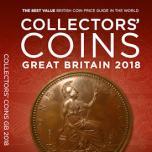|
|
The current range of books. Click the image above to see them on Amazon (printed and Kindle format). More info on coinpublications.com |
|
|

Collectors Coins Great Brit. 2014
By
Chris Perkins, in British Coin Related Discussions & Enquiries
 Coinpublications.com
Coinpublications.com